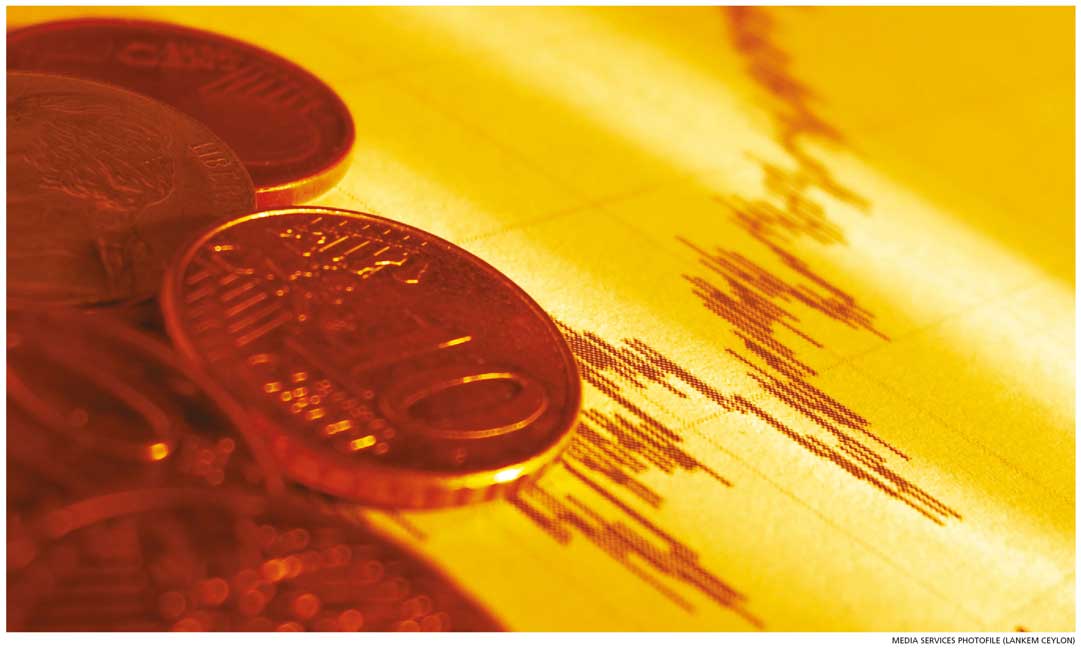GROWTH OUTLOOK
MIXED SIGNALS
Shiran Fernando assesses the outlook for the world
economy and sensitivities impacting Sri Lanka

As the revival in global growth continues, there are concerns that it may have peaked and could trend downwards. This is likely to be driven by the growing gap between developed and most emerging and developing economies, in terms of their vaccine roll outs.
 As such, this gap could lead to vaccine inequity, and put developing and emerging economies particularly at risk with the rapid increase in cases due to variants such as Delta.
As such, this gap could lead to vaccine inequity, and put developing and emerging economies particularly at risk with the rapid increase in cases due to variants such as Delta.
GROWTH FORECAST In its latest World Economic Outlook published in July, the IMF notes that it still expects the global economy to grow by six percent this year, which remains unchanged from its April estimate.
Since the April projection however, the expectation for growth in advanced economies has increased to 5.6 percent from 5.1 percent while the forecast for emerging markets and developing nations has fallen from 6.7 percent to 6.3 percent.
These changes highlight the divergence caused by the pace of immunisation campaigns, and the fiscal support available for emerging and developing economies to continue weathering the fallout from the pandemic. Furthermore, countries such as India, Indonesia, Malaysia, the Philippines, Thailand and Vietnam have seen setbacks in growth with rapid rises in cases.
Next year, global growth is expected to slow to 4.9 percent but this represents an increase in the projection from April – i.e. an expectation of 4.4 percent. This upward revision is mainly driven by the substantial upturn in the forecast for advanced economies from 3.6 percent to 4.4 percent.
This development has been fuelled by the growth envisaged in the US due to the fiscal support and an improvement in the health situation. The growth for emerging and developing economies has also been upgraded but by only 0.2 percent to 5.2 percent.
ECONOMIC DRIVERS A key driver of the forecasts has been the pace of vaccine roll outs in advanced versus developing economies.
As a result, the IMF states that immunisation campaigns serve as the principal driver behind splitting the global recovery into two baskets – viz. countries that can afford to normalise economic activity, and those that will continue to face higher case and death loads due to low vaccination rates and the impact of new variants.
The other main driver is the level of fiscal support that countries in the advanced economies bloc have been able to provide their nations relative to the developing and emerging countries.
Emerging economies like Brazil and Turkey have begun normalising their interest rates in response to increasing price pressures – and as such, they can no longer support their economies by easing monetary policy and reducing interest rates.
TRADE PROSPECTS Global trade volumes are set to expand by 9.7 percent this year before falling to seven percent in 2022.
Despite the supply chain related disruptions that have seen freight rates hit new highs, the upturn in trade is expected to be driven by a broader recovery in consumption post-pandemic related purchases.
Services related trade is expected to recover albeit more slowly with restrictions in cross border travel being a critical limiting factor in certain markets that have been impacted by the Delta variant.
However, the near-term supply chain shocks are expected to continue with longer delivery times and supply-demand mismatches.
The concern is the impact new outbreaks will have on supply chains particularly in Southeast Asia, which is a major exporter.
As such, the impact this will have on production networks in the wake of higher demand in advanced economies with the holiday season at the end of this year will have to be monitored.
FINANCIAL SUPPORT In support of the global economy, the IMF increased its allocation of Special Drawing Rights (SDRs) by around US$ 650 billion in early August.
This is expected to improve access to dollar liquidity and enable IMF member nations to prop up their reserves by accessing the increased SDR allocation based on their quotas in the fund. It is expected that some 275 billion dollars will be directed to emerging and developing economies.
Such a development is particularly important for countries like Sri Lanka, which has faced external debt and dollar liquidity pressure. Based on the country’s quota, it stands to receive US$ 780 million as inflows to reserves.
This will help bolster our gross official reserves, which fell to 2.8 billion dollars at the end of July, following the servicing of the US$ 1 billion International Sovereign Bond during the month.
Like most other developing economies, Sri Lanka will have to rely on similar liquidity and reserve infusions as it looks to manage the impact of the pandemic.
GROWTH IMPLICATIONS With the divergence in global growth, key markets such as the US and Europe will be the leading drivers of economic growth.
This augurs well for Sri Lanka’s major export markets for items like apparel though a recovery in Asian markets will help ease the cost of imports.



